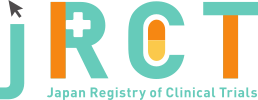臨床研究等提出・公開システム
|
Sept. 18, 2024 |
|
|
Sept. 18, 2024 |
|
|
jRCT1052240127 |
A study to elucidate the relationship and pathophysiology of left ventricular hypertrophy and worsening heart failure after TAVI from the perspective of coronary microvascular dysfunction |
|
Coronary microvascular dysfunction and heart failure after TAVI |
Nakazawa Gaku |
||
Kindai university hospital |
||
377 2 Onohigashi Osakasayama city Osaka |
||
+81-9019511351 |
||
koyumi514@gmail.com |
||
Fujita Kosuke |
||
Kindai university hospital |
||
377 2 Onohigashi Osakasayama city Osaka |
||
+81-9019511351 |
||
koyumi514@gmail.com |
Recruiting |
Oct. 09, 2024 |
||
| 30 | ||
Observational |
||
single arm study |
||
open(masking not used) |
||
uncontrolled control |
||
single assignment |
||
diagnostic purpose |
||
Adults aged 20 years or older |
||
Presence of severe valvular disease (stenosis or regurgitation) other than aortic valve stenosis |
||
| 20age 0month 0week old over | ||
| No limit | ||
Both |
||
Aortic stenosis, Heart failure, Coronary microvascular dysfunction |
||
AS, TAVI, CMD |
||
A07 |
||
CFR and IMR as indicators of coronary microvascular dysfunction before and after TAVI |
||
Evaluation of the correlation between wire-based IMR and angio-based IMR |
||
| Ethics Committee of Kindai University Faculty of Medicine | |
| 377-2 Ohnohigashi Osakasayama city, Osaka | |
+81-723660221 |
|
| koyumi514@gmail.com | |
| Approval | |
Aug. 09, 2024 |
Yes |
|
Personal information will be anonymized and protected. The data will be stored within the institution and securely safeguarded to prevent any external leakage. The data will be recorded on external storage media such as USB drives, using computers disconnected from the network, and securely stored under lock and key. |
none |
